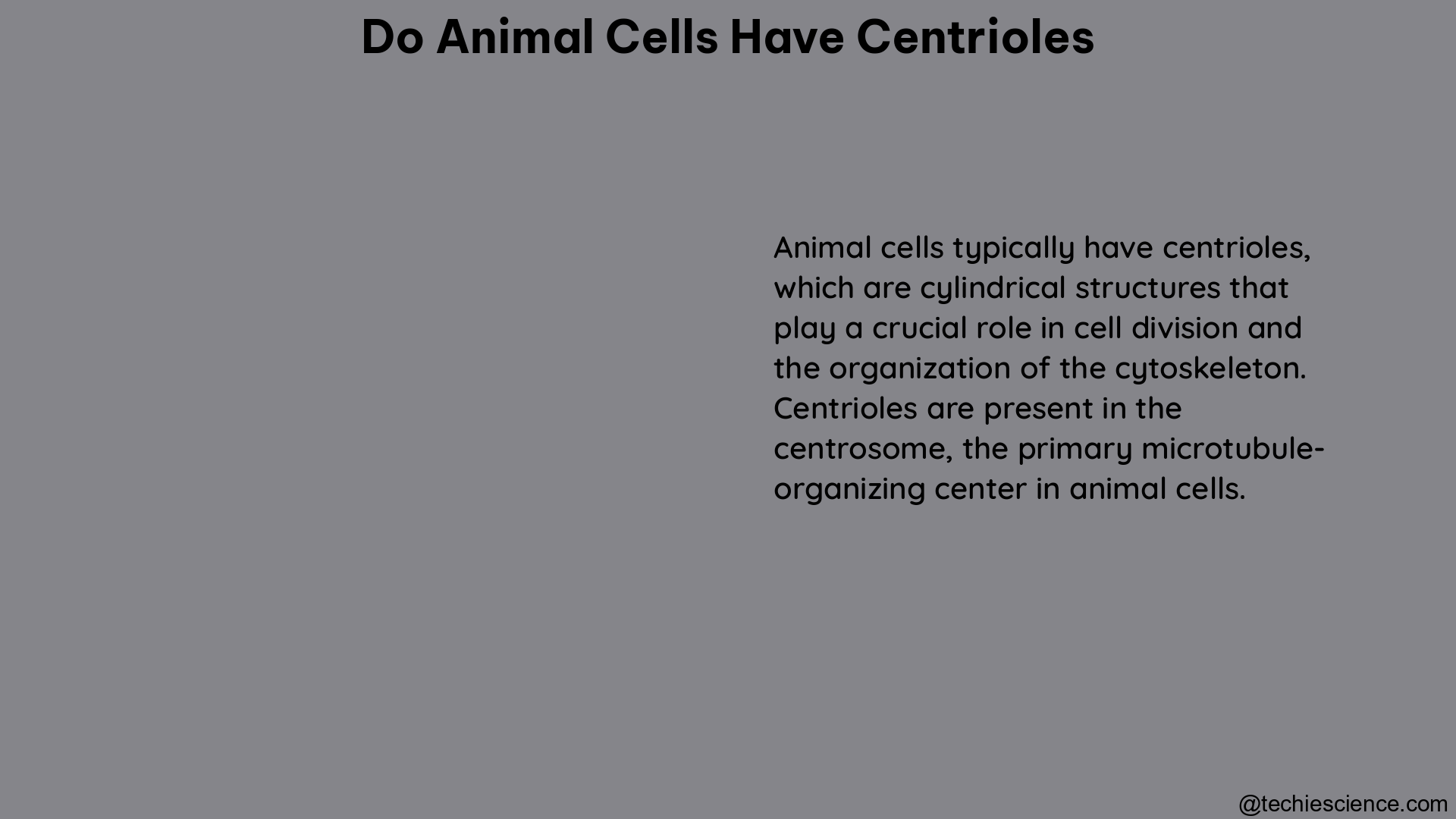Animal cells are known to possess a unique organelle called the centriole, which plays a crucial role in various cellular processes. Centrioles are cylindrical structures composed of microtubules and are typically organized into nine sets of short microtubule triplets. These organelles are present exclusively in animal cells and some lower plants, making them an essential feature of the eukaryotic cell.
The Structure and Composition of Centrioles
Centrioles are typically 0.2-0.5 μm in diameter and 0.3-0.5 μm in length, and they are composed of nine sets of short microtubule triplets arranged in a cylindrical pattern. These microtubule triplets are made up of three microtubules: one complete microtubule (the A-tubule) and two incomplete microtubules (the B-tubule and the C-tubule). The microtubules within the centriole are held together by a variety of proteins, including centrin, polyglutamylated tubulin, and other centriole-specific proteins.
The centriole’s cylindrical structure is further reinforced by a set of nine peripheral microtubules, known as the “centriolar wall,” which are connected to the microtubule triplets by radial spokes. This intricate arrangement of microtubules and associated proteins gives the centriole its characteristic morphology and stability.
The Functions of Centrioles in Animal Cells

Centrioles play a crucial role in the formation and organization of two essential cellular structures: centrosomes and cilia.
Centrosome Formation
Centrioles are the core components of the centrosome, which is the primary microtubule-organizing center (MTOC) in animal cells. During cell division, the centrosome is responsible for organizing the mitotic spindle, which is essential for the accurate segregation of chromosomes into the daughter cells.
The process of centrosome formation begins with the duplication of the existing centrioles. This duplication occurs in a semi-conservative manner, where each existing centriole serves as a template for the formation of a new centriole. The newly formed centrioles then migrate to opposite poles of the cell, forming the two poles of the mitotic spindle.
Cilia Assembly
Centrioles are also essential for the assembly of cilia, which are hair-like projections that extend from the cell surface. Cilia are involved in various cellular processes, such as sensory perception, fluid flow regulation, and cell motility.
The formation of cilia begins with the migration of a centriole to the cell surface, where it becomes the basal body of the cilium. The basal body then serves as a template for the assembly of the ciliary axoneme, which is the core structure of the cilium.
The Role of Centrioles in Mitosis and Chromosome Segregation
While centrioles are not strictly required for the formation of the mitotic spindle, they do play an important role in ensuring the accuracy of chromosome segregation during cell division.
In the absence of centrioles, animal cells can still form bipolar spindles through alternative pathways, such as the self-organization of microtubules. However, these acentriolar spindles have been shown to have reduced fidelity in chromosome segregation, leading to increased rates of aneuploidy (an abnormal number of chromosomes) in the daughter cells.
Centrioles contribute to the accuracy of chromosome segregation by biasing the position of the spindle poles during mitosis. This ensures that the chromosomes are properly aligned and segregated into the daughter cells, minimizing the risk of chromosomal abnormalities.
Centriole-Associated Diseases
Defects in centriole-associated proteins have been linked to a variety of ciliary diseases, including:
- Nephronophthisis: A genetic disorder that leads to the progressive destruction of the kidneys.
- Bardet-Biedl syndrome: A genetic disorder characterized by obesity, vision loss, polydactyly, and other developmental abnormalities.
- Meckel Syndrome: A rare, lethal genetic disorder characterized by developmental abnormalities, including polycystic kidneys and central nervous system defects.
- Oral-Facial-Digital syndrome: A group of genetic disorders characterized by abnormalities of the face, oral cavity, and digits.
These diseases highlight the importance of centrioles and their associated proteins in the proper functioning of cilia, which are essential for various cellular processes.
Conclusion
In summary, animal cells do possess centrioles, which are cylindrical organelles composed of microtubules. Centrioles play a crucial role in the formation of centrosomes and cilia, both of which are essential for various cellular processes, including cell division and sensory perception. While centrioles are not strictly required for the formation of the mitotic spindle, they contribute to the accuracy of chromosome segregation during cell division. Defects in centriole-associated proteins have been linked to a variety of ciliary diseases, underscoring the importance of these organelles in maintaining cellular homeostasis and proper development.
References:
- Marshall, W. F. (2006). What is the function of centrioles? Journal of Cellular Biochemistry, 100(4), 916-922. https://doi.org/10.1002/jcb.21117
- Centriole. (n.d.). British Society for Cell Biology. Retrieved from https://bscb.org/learning-resources/softcell-e-learning/centriole/
- The Enigma of Centriole Loss in the 1182-4 Cell Line. (2020). PMC. https://doi.org/10.1093/pmc/pma182
- Centrioles are present in . – BYJU’S. (n.d.). BYJU’S. Retrieved from https://byjus.com/question-answer/centrioles-are-present-in-animal-cellsplant-cellsbacteriaalgae/
- Centriole – an overview | ScienceDirect Topics. (n.d.). ScienceDirect. Retrieved from https://www.sciencedirect.com/topics/neuroscience/centriole

Hi….I am Shravanthi Vikram, I have completed my master’s in Bioinformatics and have 10 years of teaching experience in Biology.
Let’s connect through LinkedIn-